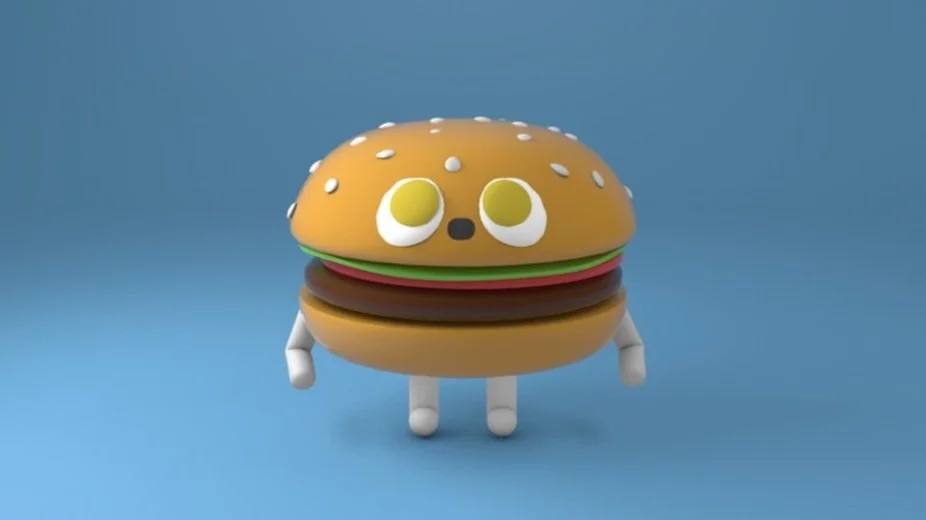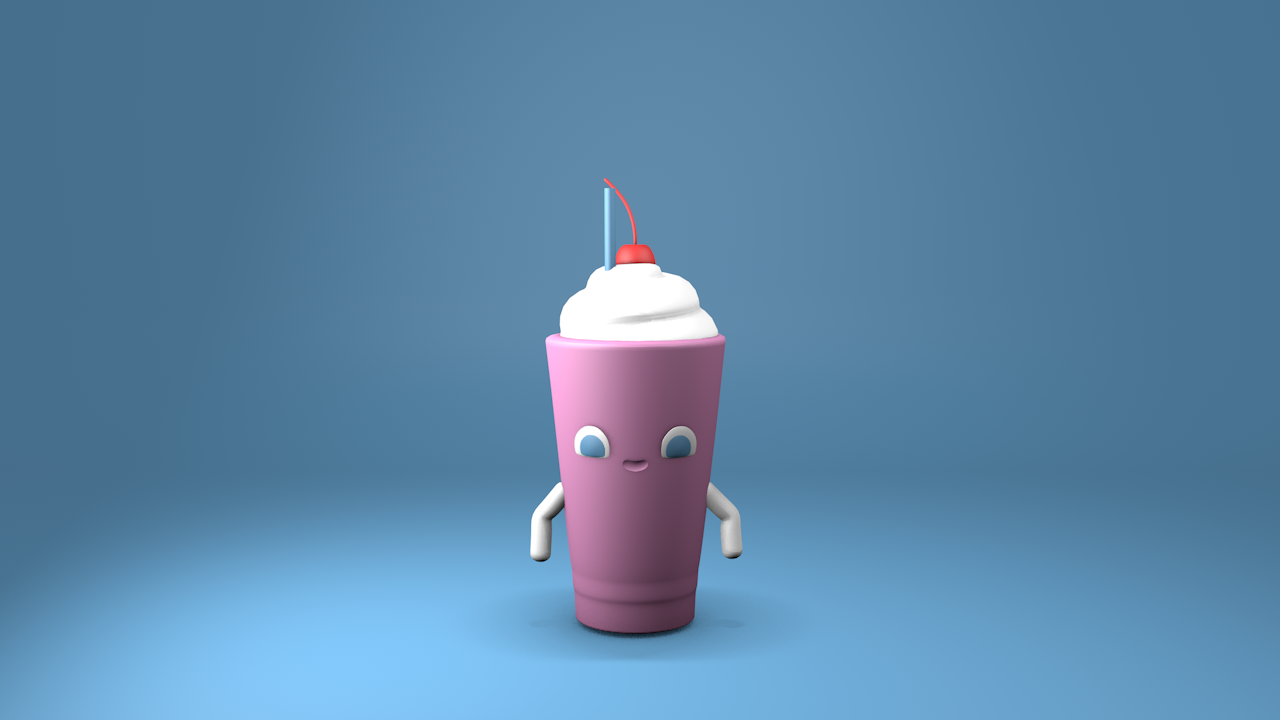
The first stim kit in this series plays on nostalgia to inform the stim designs. Playing into user nostalgia is a popular and effective marketing strategy, and with good reason; by eliciting fond memories of the past, positive associations are made with the product or brand. In a similar manner, Stim Burger aims to play upon participants’ nostalgic association with getting fast food prizes by referencing fast food imagery and cute character designs. The series consists of three AR characters that the user interacts with as a virtual fidget toy and a matching physical fidget toy.
Burger AR + Haptic Slider
Initial Design
Final Design
The animation features a popular subset of “oddly satisfying” videos; things falling or stacking neatly on top of one another. Given the structure of a hamburger, it seemed fitting to reference this genre of satisfying videos in the toy’s design.
In order to establish a sense of visual continuity between the AR toys, the 2D animated logo was incorporated into each AR experience. With this AR toy, when the user touches the burger, it triggers the jumping animation and sound effect, providing the user with a multisensory experience.
I began the Stim Burger stim kit with the most popular fast food item in America: the burger. The character is 3D modeled, rigged, and animated in Cinema 4D before taking the final animation into Adobe Aero for use in AR applications. The initial character design, while clearly conveying a burger shape, was a bit unsettling with its blank, wide-set eyes and lack of facial features. By adding a mouth and more distinct and expressive eyes, the character became more appealing at once. I also chose to add sesame seeds and a tomato slice to differentiate this character from other types of sandwiches.
The physical burger toy references the popular haptic slider fidget toy format, serving as wordplay on the word slider, which is also a style of hamburger. Using a modified version of the 3D model used for the AR character, I 3D printed the haptic slider burger toy with polylactic acid (PLA) filament on a Prusa Mini fused deposition modeling (FDM) printer. Then, I sanded and painted the haptic slider pieces and installed 6 sets of neodymium magnets in each half of the slider to create a set of magnetic tracks for the pieces to slide along.
French Fry AR + Clicker Toy
For the AR French fry animation, I chose to emphasize the objects falling perfectly into place. With the shape of the character being a container full of many French fries, it presented itself as a suitable candidate for animating this type of scene.
When the user clicks on the french fries, the animation plays, along with a squeaking sound effect. I chose this sound as it is a familiar one often associated with squeezing squeaky toys. By referencing this sound, I intend for users to recall the multisensory experience of playing with such toys. In this way, the user feels as though they are squeezing the toy, despite the touch interactions supported in Adobe Aero being limited to tapping.
The next character in the Stim Burger stim kit is a classic fast food staple often served with hamburgers: a container of French fries. Applying what was learned in designing the AR burger, the design of this character required fewer iterations.
The physical counterpart for the AR French fry character simulates the motion of the French fries rising out of and falling back into the fry container. I achieved this by referencing a common stimming behavior not associated with fidget toys: pen clicking. Using the 3D model used to make the AR character, I then added a modified version of a spring-powered push button originally designed by Thingiverse user Alpacapla (https://creativecommons.org/licenses/by/4.0/). The French fry clicker toy and button were then 3D printed. I then assembled the button and added a spring 12 mm in length and 4mm in diameter. The French fry toy pieces were sanded, primed, and painted to resemble the AR character.
Milkshake AR + Squishy Toy
Initial Design
Final Design
For the audio effect in this AR experience, I chose audio of a spring bounce sound effect, as the sound is congruous with the bouncing movement of the character animation. When the user touches the milkshake character, the bouncing animation and sound effect play.
The final character in the Stim Burger stim kit is a strawberry milkshake. This character in particular highlighted the limitations of working with 3D models in Adobe Aero. The original design of this character uses a transparent material for the cup and lid to imitate the clear plastic used to make these cups in the real world. Unfortunately, transparent materials are not currently supported in Adobe Aero, and adjustments to the design were necessary to optimize the model for AR. While the first two AR character animations reference a specific genre of oddly satisfying videos, this character’s animation is more focused on the most basic element of stimming: repetitive action.
For the final physical toy in the Stim Burger series, I chose to reflect the flexibility and bouncy quality of the AR milkshake character by making a polyurethane foam squishy toy. Design of the toy began with 3D printing the model used for the AR milkshake character. Given the rapid cure time of polyurethane foam, it was not likely that smaller details like the milkshake character’s arms and straw would not cast well. Additionally, these small elements with little connecting them to the main body of the toy are often prone to tearing in squishy toys, so these details were removed from the model. I then made a silicone mold of the 3D printed milkshake character and used it to cast the milkshake squishy toy using polyurethane foam. Once dried, it was painted with fabric paint.










